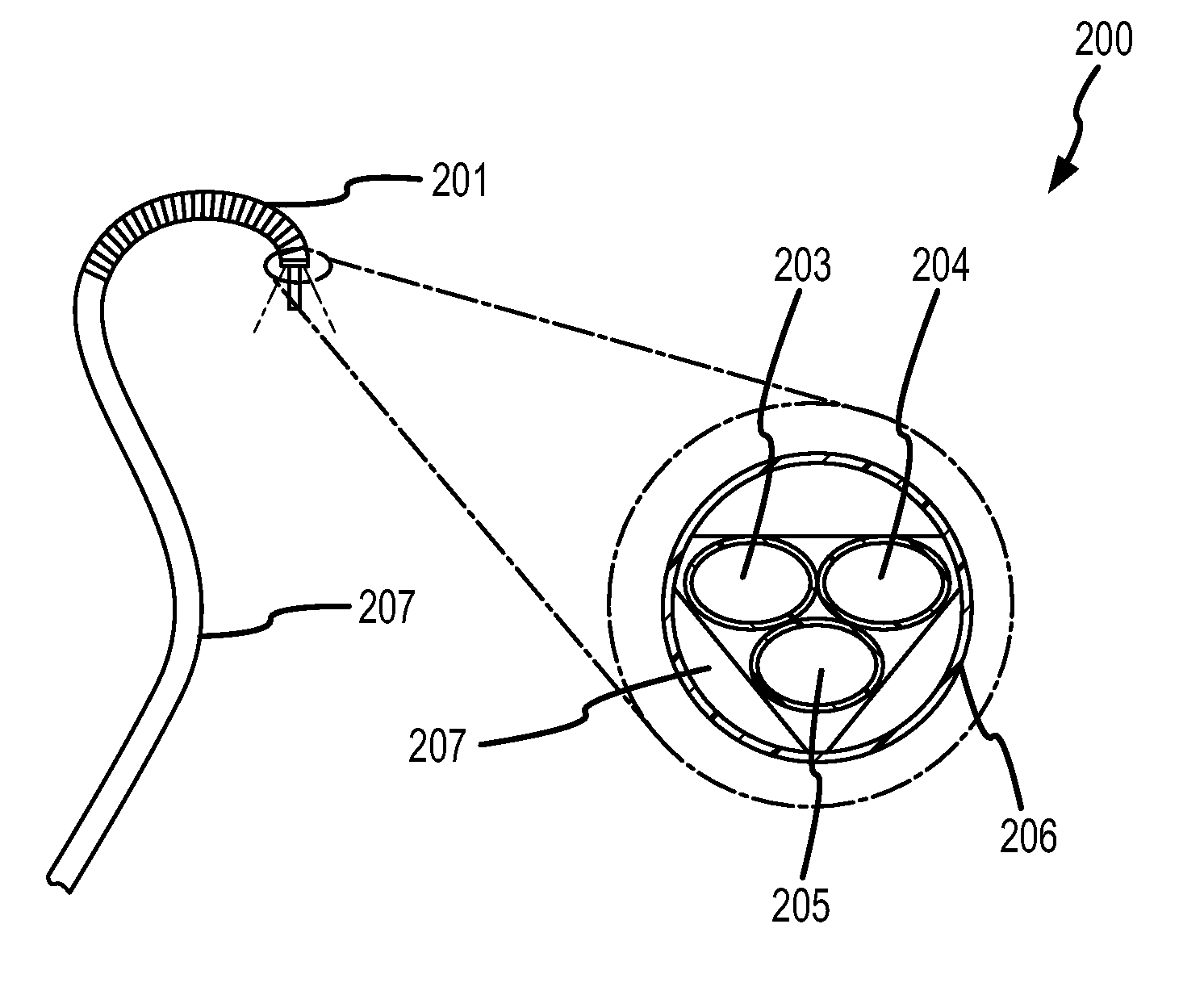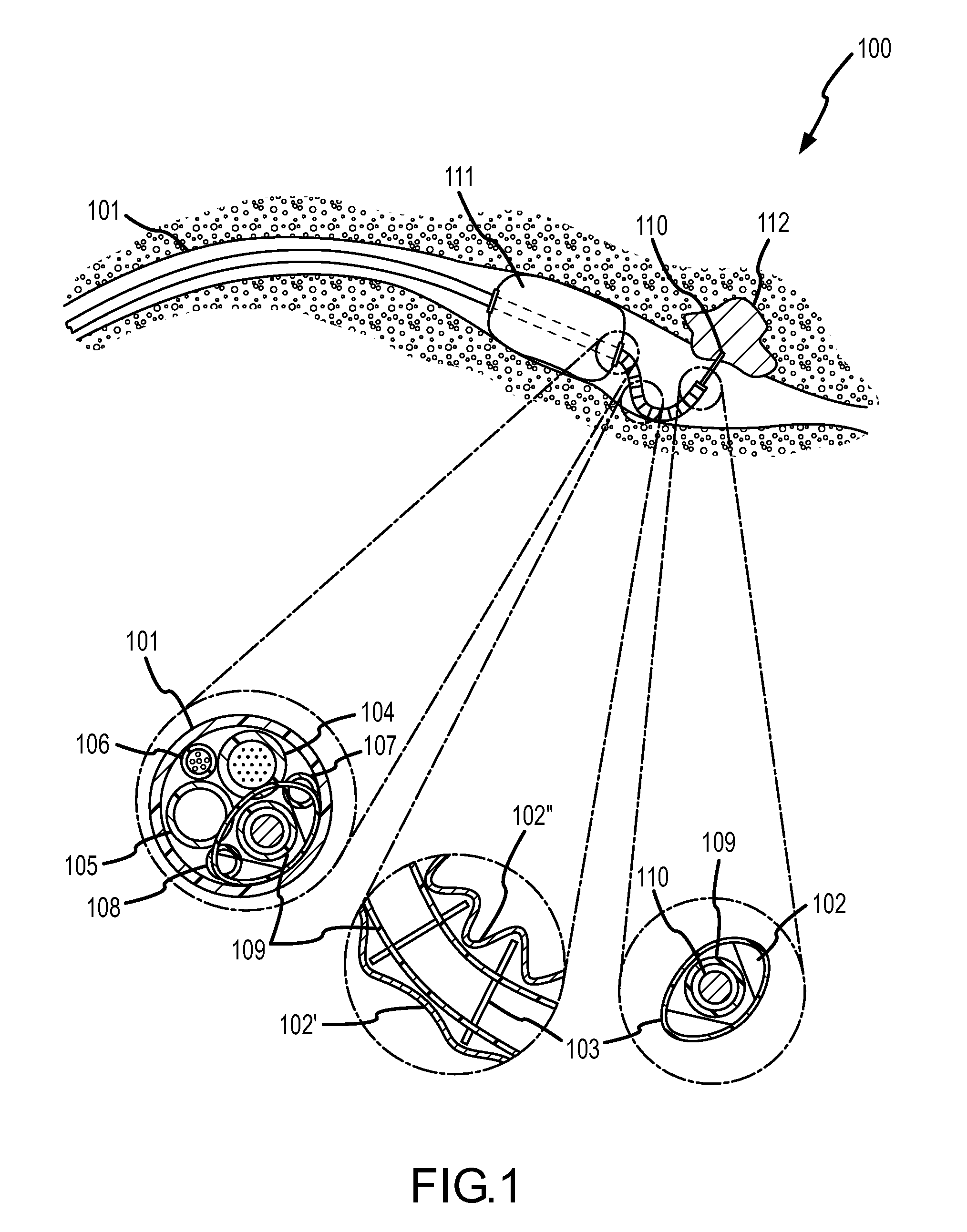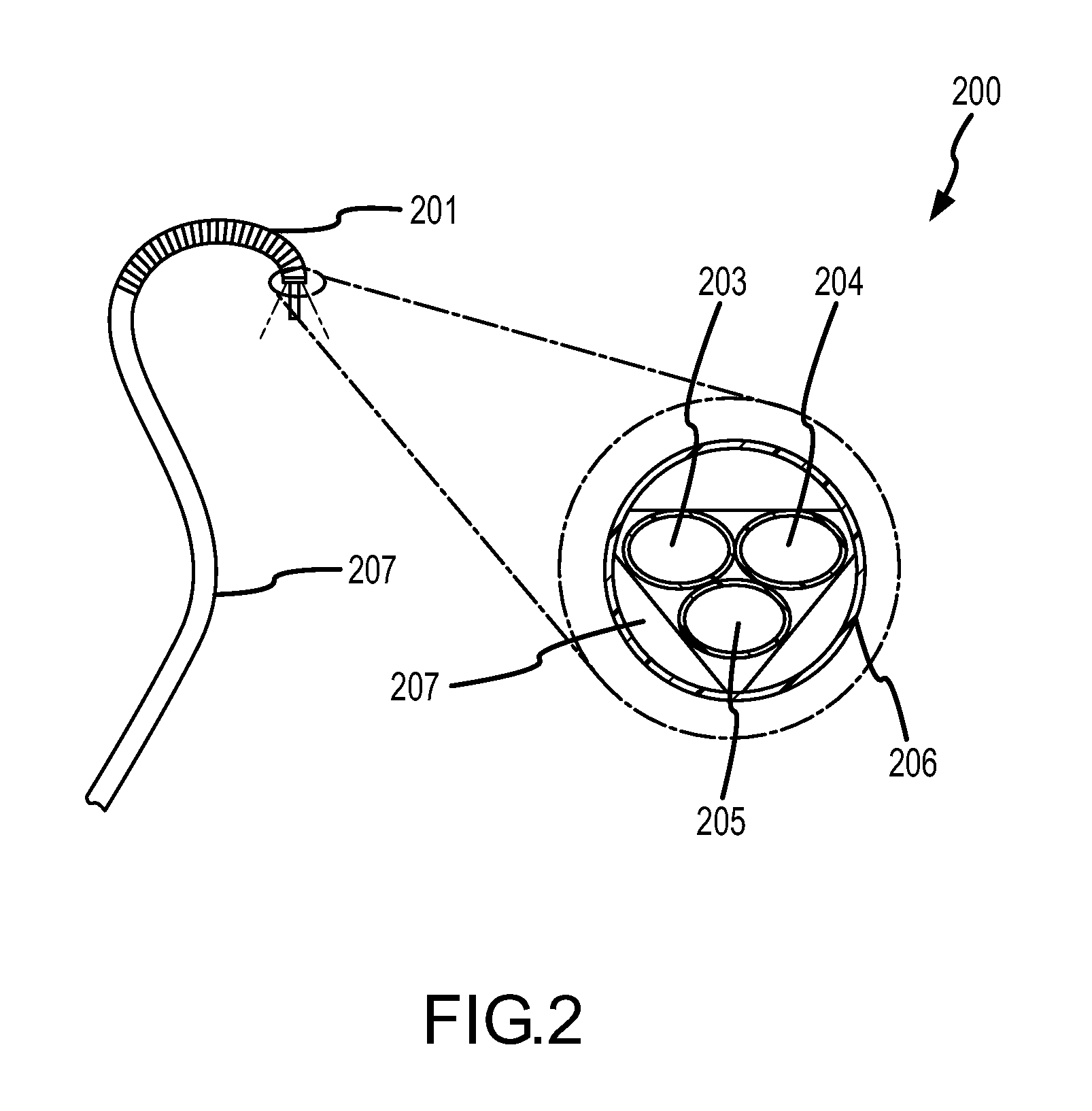Endoscope apparatus, actuators, and methods therefor
a technology of actuators and endoscopes, applied in the field of endoscopes, can solve the problems of insufficient flexibility, dexterity and small diameter of current endoscopes and related instruments to access, direct visualize, and effectively perform sinusitis, and affect personal productivity and quality of life. , the effect of accurate diagnosis and staging
- Summary
- Abstract
- Description
- Claims
- Application Information
AI Technical Summary
Benefits of technology
Problems solved by technology
Method used
Image
Examples
example 1
Direct Visualization
[0108]An investigation of the optical quality provided by the image guide in the catheter has been conducted. In one run, a 1.0 mm nominal outside diameter of a fiber bundle, consisting of fibers approximately 4 μm in diameter, supporting approximately 30,000 fibers was used for image transmission. Lenses on the fiber tip can provide a depth of field from 1 mm up to 10 mm, with an angular field of view of 55 degrees. The bending radius of these image guides is as small as 30 mm.
[0109]Another experiment was constructed with approximately 3000 image guide fibers, surrounded by an illumination fiber ring. FIG. 22 shows an image recorded with this scope, taken at a distance of approximately 5 mm from a printed target. The ink letters are approximately 2 mm high, and are clearly identifiable. When magnified in a still image like this, individual fiber pixels are visible, and the image becomes noticeably grainy. However, this pixilation is reduced considerably in live ...
example 2
Clearing Secretions and Blood
[0111]Clinicians routinely employ proven methods such as saline flush and administration of selected drugs to thin mucous, decrease secretions and minimize bleeding during procedures. Recent clinical studies employing fluorescence imaging techniques have refined these secretion reduction techniques. A flush / suction port has been incorporated into certain embodiments of the MFS design and located close to the distal lens of the image guide to clear material on or in front of the lens.
SAMPLESUCTION RATE (seconds / ml)Saline22Saline / Airway Secretion (1:1 Mix)29Saline / Whole Blood (1:1 Mix)42
[0112]As shown in the table above, testing conducted with a sample small diameter catheter suitable to fit within the MFS demonstrated the feasibility of removing blood and airway secretions through this port. Secretion samples at room temperature were removed from the catheter using Standard Wall Suction, used for bronchoscopy, with saline aspiration between each test to c...
example 3
Prototype Model Actuated Coil Segment
[0113]A method similar to that described with reference to FIG. 15 was used to generate a prototype device in stainless steel. Such prototype assembly uses a technique that first rolls and spot welds the actuator element strings over a coil spring skeleton, using a copper stylus and copper mandrel as resistance welding electrodes, selectively energized to produce welds at the points where they cross. FIG. 11 shows a model in stainless steel constructed by similar process. When the welds are complete, the coil ends are released from their fixtures, allowing the axial tension in the coil to compress the actuator elements inward, resulting in a final structure as illustrated in FIG. 1.
PUM
 Login to View More
Login to View More Abstract
Description
Claims
Application Information
 Login to View More
Login to View More - R&D
- Intellectual Property
- Life Sciences
- Materials
- Tech Scout
- Unparalleled Data Quality
- Higher Quality Content
- 60% Fewer Hallucinations
Browse by: Latest US Patents, China's latest patents, Technical Efficacy Thesaurus, Application Domain, Technology Topic, Popular Technical Reports.
© 2025 PatSnap. All rights reserved.Legal|Privacy policy|Modern Slavery Act Transparency Statement|Sitemap|About US| Contact US: help@patsnap.com



